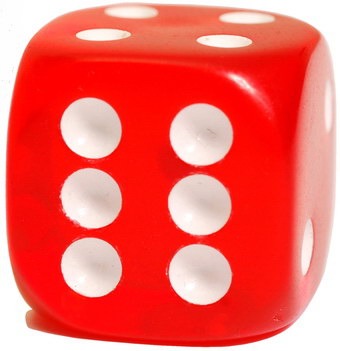TACKLIFE Portable Inverter Generator
There are few places that do not have the occasional power outage and some places get them more often than others.
It may be snow taking down power lines, fire in a transformer or as here in California the power company shutting down power when there are high winds and the brush is dry to prevent wildfires.
We were not financially compensated for this post and the samples were provided to us for review purposes. The opinions are completely our own based on our experience with the products.
When the power goes out, there are different levels of redundancy you can prepare for depending on what your needs are.
Level 1 - Get out your flashlights, burn some candles, charge your phone with a power bank and cook your food on the outdoor BBQ,
all while your food starts going bad in the fridge and defrosting in the freezer. This may work for a few hours before you have to start dumping bad food in the trash.
Level 2 - You have prepared a little and invested in some larger lithium battery power stations that can power a fridge or freezer for up to a day.
You may also be able to keep your internet router up and turn on a LED lightbulb for a few hours if you have more than one power station.
Level 3 - You invest in a small freestanding generator that can power a few appliances, your internet and some lights indefinitely as long
as you have enough gas and enough power cords to temporarily create alternate electric connections to anything important.
Level 4 - If you want to run the AC and want to have everything ready to go you need a permanently installed generator that starts automatically
in an outage, or invest in a Tesla Powerwall (or a similar house sized battery). This is likely overkill for most people.
For those of us in California, having a mix of a couple of large lithium battery power stations and a small backup generator has been a great compromise.
Last summer we had a few smaller outages that lasted up to a couple of hours and a longer outage that lasted two days. During the shorter
outages we used some lithium power stations to keep our internet running and charging our laptops while working from home.
During the longer outage, we started up the generator after a couple of hours and ran extension cords to our refrigerators and freezer.
We also were able to charge our lithium power stations when the generator was running, so we could shut down the generator at night to avoid angry neighbors.
The generator we have is a TACKLIFE Portable Inverter Generator that can deliver up to 2250W peak and about 1800w sustained.
This is more than enough for a typical household as long as you do not run the AC, electric heaters, dryers or ovens.
We run a couple TVs (300w), a desktop computer (200w), two refrigerators (300w), a freezer (100w), some lights (200w) and misc.
electronics (300w). This all totals about 1400w, so there is still some power to spare.
If you choose to go this route, get this or a similar small generator. We ordered our generator through Amazon.
Once you receive your generator, you will want to start it up and get familiar with running it right away - once the power is out it may be too late.
The first thing we discovered was that you need to fill the engine with oil. This should have been obvious, but we did not consider this ahead of time
and had to run out to buy some compatible oil. We got a 15W40 type oil as described in the user manual for our generator.
The second obvious thing you will need is gas for running it. You will need a large approved petrol can to store gas in for an eventual outage,
and if you really want to plan for the worst, the more storage cans the better. The last thing to remember is to drain your generator of gas and oil when it will not be used for a while.
If your outages are seasonal, we recommend doing it as soon as possible after the last use of the season or at least within a couple of months after use.
We store the generator in our garage when not in use, but have created a covered space for it in our backyard along with a fixed installed
TACKLIFE Retractable Extension Cord (with 12 Gauge power cable) that we use during fire season. This allows us to quickly start
the generator, plug in the retractable extension cord and drag one cable through a window. Once in the house, it's easy to plug in extension
cords in the 3 outlets to supply different parts of the house. It's not pretty having extension cords cables running down the hallway, but when
the alternative is no power, we can live with it temporarily.
Our TACKLIFE Portable Inverter Generator is reasonably quiet. I would compare it to standing next to a quietly idling car or small motorcycle
when the generator is running without much load. With a higher load, it is more like a moving scooter. Starting it is very easy. You simply
unplug any electric load, turn the switch to ON and pull the cord. Ours has always started on the first pull and we have not ever had to use the
choke option. I suspect in colder weather your experience may be different.
► In our experience it will run for 4-5 hours on 50-60% load
► The output power is clean and we have not had problems running any electronic equipment
► It can be carried easily by any adult
► It has a built in eco mode that runs it slower and quieter when the load in smaller
► For output, it has DC 12v, USB 5v, and two regular wall outlets with 120v
► There is also overload protection that will stop it if you are trying to pull too much power
The Gist
Overall, we are very happy with the generator and we would not want to be without it heading into a new fire season while working from home.
Just one 24+ hour outage (while tossing out spoiled food from the freezer and refrigerator) will pay for the cost of the generator. If you also have kids at home,
this is a small price for your sanity so they have access at least some of the time to their electronics.
The TACKLIFE retractable extension cord we got with the generator has 65 feet of 12 AWG/15A cable that rolls out very easily and locks into place. If you
have loose extension cords, having the retractable cord is not necessary but it certainly makes it easier to hook up and get going when there is a power outage.





 GistGear rates the TACKLIFE Portable Inverter Generator 6 (out of 6) for ease of use, small size, quiet operations and peace of mind knowing we will not be without power again.
GistGear rates the TACKLIFE Portable Inverter Generator 6 (out of 6) for ease of use, small size, quiet operations and peace of mind knowing we will not be without power again.